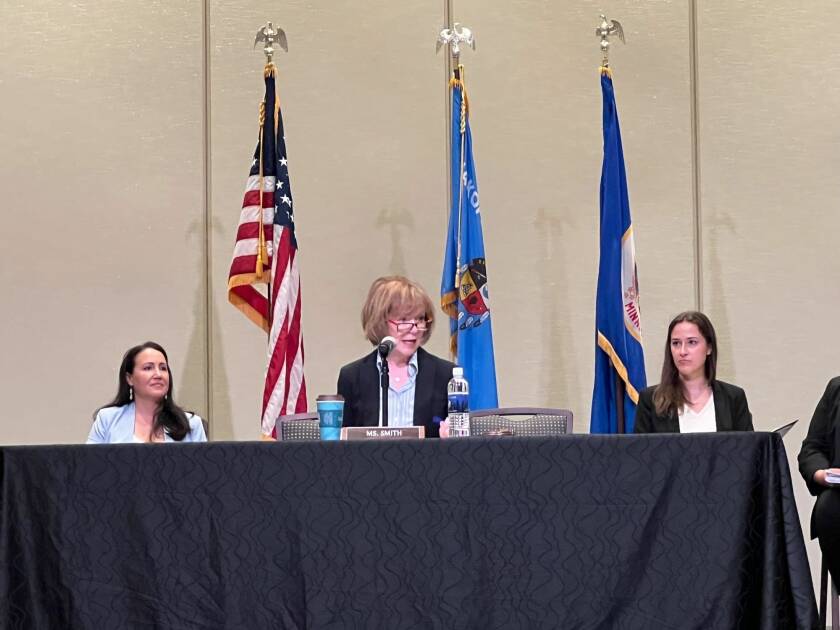PRIOR LAKE, Minn. -- There’s a saying in Indian Country that Mille Lacs Band of Ojibwe Chief Executive Melanie Benjamin used to frame up her remarks about the need for infrastructure improvements during a U.S. Senate field hearing in Prior Lake.
“You could tell where the reservation begins by where the pavement ends,” she said. “We have a lot of catching up to do.”
ADVERTISEMENT
And Benjamin is hopeful that a line of money that has started to flow from Washington will provide that boost.
“There is a stunning amount of backlogged need on our reservation and throughout Indian Country. The new infrastructure law is a promising good start and a better path to better opportunities for tribal communities.”
But Benjamin and other tribal government leaders were quick to note that there’s a difference between money being available and it being deployed.
The U.S. Senate Committee on Indian Affairs hearing was convened by Democratic Sen. Tina Smith, who described the money as a historic investment.
“The opportunity with the Infrastructure and Jobs Act is significant. It is equally significant that we ensure that that opportunity works,” she said.
In all, the law will mean $13 billion for a range of upgrades on tribal lands nationwide. That’s everything from better sewers, repaired dams, buried cable to bring faster internet and improvements meant to foster cleaner water and energy.
Some of the money is already going out the door based on predetermined formulas. Other funds will require tribal governments to compete for the aid based on what’s ready to go.
ADVERTISEMENT
That’s what worries Bois Forte Band of Chippewa Chairwoman Cathy Chavers, who talked about a deteriorating dam that needs work and some road fixes.
“We hear about shovel-ready projects. We're scrambling to get shovel-ready projects because we don't have the resources,” she said.

For her small, northeastern Minnesota tribe, it’s a chicken-and-egg situation. Without a lot of money to draw up projects or provide a match, it might get passed by. And unless the funding streams become more flexible, she says those already behind will get further behind.
“Sometimes it's like a square trying to fit into a round hole for us because it doesn't meet any of those categories or those funding opportunities,” said Chavers.
Bryan Newland, the assistant secretary for Indian Affairs at the Interior Department, says he understands the concern. He says most federal agencies have limited ability to supply waivers but are looking for places to do so.
“But that's a muscle that hasn't been exercised consistently in the last two decades. So you know it’s a workaround for some of these challenges. But it doesn't shave the square peg into a round peg,” said Newland.
That’s where Congress might have to step in, said Smith, who also says there’s room to simplify the process.
ADVERTISEMENT
“There are grants for technical assistance to help you apply for grants,” she said. “That’s great, but then how do you figure out, how do you know about that? And how do you take full advantage of that?”
The Mille Lacs Band’s Benjamin says her tribe has people on staff to figure it out. Not all are as lucky, she says.
“We've been fortunate that we have a grants department that can assist in securing some funding, even though they're overloaded as well. But direct funding I think is so important to tribes, so the smaller tribes or other tribes that don't have the capacity are not left out, [and] have the opportunity to have funding to make a better life for their community members.”
The infrastructure money is spread out over the next several years — raising expectations that the hang-ups raised at the hearing can be addressed, and hopes that new ones won’t surface.
______________________________________________________
This story was written by one of our partner news agencies. Forum Communications Company uses content from agencies such as Reuters, Kaiser Health News, Tribune News Service and others to provide a wider range of news to our readers. Learn more about the news services FCC uses here.








